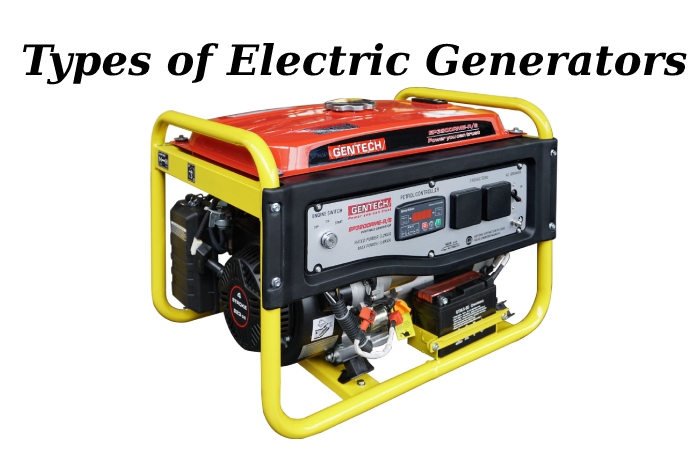Table of Contents
Introduction
An electric start generator is many people overcomplicate electric start generators, but they are often much more straightforward than you might think, like many other generator factors. And also, An electric start generator is a generator that doesn’t eye a pull cord.
You can power the generator simply by drumming a switch or rotating a key, and you’ll find it on all kinds of things, counting cars and other cars. And also, When you do this, it controls a small battery, which activates your generator. And also, Sees it is pretty simple. But do you need this extra feature, or should you stick with a simple pull cord instead? Manufacturers seem to think the electric start is a feature worth highlighting.
Electric Start Not Necessarily a Must-Have Feature
Pulling the power cord to power a generator might seem old-fashioned. And also, After all, the power cord is not somewhat you will usually see on many other appliances, although you might see them or similar cord-like pulleys on things like lawnmowers. However, it is not by any means a standard feature. Pull cords can take a bit of receiving; they aren’t as simple as just flicking a switch or turning a key. But once you have used it a few times, And also, it will be much calmer to pull the cord correctly, with enough force, etc.
What is an Electric Generator?

Electric generators transform mechanical energy into electrical energy, supplying electricity to electric power systems. They are driven by steam, gas, and wind turbines and function similarly to electric motors.
History of Electric Generators
Electrostatic generators were used before the association between power and magnetism was discovered. These generators operated on electrostatic principles. Electrostatic generators were never used for the generation of commercially significant quantities of electric power due to the following reasons:
- Due to the difficulty in cloistering machines that shaped high voltages.
- Due to the low power rating.
- Constructed by British scientist in 1831.
- Addressed electrostatic generator disorder.
How do Generators Create Electricity?
Generators do not create electricity; instead, they use the mechanical energy supplied to force the movement of electric charges in the wire of their windings through an external electric circuit. And also, This flow of electrons establishes the electric output present provided by the generator.
The modern-day generators work on the code of electromagnetic induction discovered by Michael Faraday. And also, He realized that moving an electrical conductor in a magnetic field could create the above current flow. And also, This movement makes a voltage difference between the two ends of the conductor, which causes the electric charges to flow, making electricity present.
Components of an Electric Generator
The main components of an electronic generator are given below:
The Frame: the structure
An Engine: the source of mechanical energy
The Alternator: produces an electrical output from the mechanical input
A Fuel System: to keep the generator operational
A Voltage Regulator: to regulate the voltage output
A Cooling System: to control heat levels that build up in the system
A Lubrication System: for durable and smooth operations over a span
An Exhaust System: to dispose of the waste exhaust gases produced in the process
A Charger: to keep the battery of the generator charged
Main Control: the control panel controls the generator border.
Types of Electric Generators

Electric generator classification depends on the type of electrical vigor produced, either direct or alternating.
AC generators recognizes as single-phase generators and are limited to 25 kW.
DC generators: These generators alienate into three groups, and they are shunt, series, and compound-wound. And also, Shunt generators use in battery chargers. Series generators use in street lights. At the same time, the greatest of the DC producers are compound-wound.
Uses of an Electric Generator
- They deliver control for most control nets across cities.
- Small-scale generators provide a good backup for household power needs or small businesses.
- Before the ability is set up at construction sites, they extensively use electric generators.
- Energy-efficient as fuel ingesting reduces radically.
- Since they give a range of power output, they use in labs.
- They use to drive engines.
- They use in transportation.
Synchronous Generators
A significant reason for selecting irregular currents for power networks is that their continual variation with time allows the use of transformers. And also, These devices change electrical power at whatever voltage and current it generates, too high voltage and low current for long-distance transmission. They then transform it to a low voltage suitable for each consumer (typically 120 or 240 volts for domestic service).
It is the only boring shape for which two waves expatriate from each other in time can add subtract and have the same condition occur. And also, The idea is then to have all voltages and currents of sine shape. The synchronous producer design to produce this shape as precisely as is practical. And also, This will become apparent as such a generator’s major components and characteristics describes below.
Conclusion
the electric generator also called a dynamo, is any machine that converts mechanical energy to electricity for transmission and distribution over power lines to domestic, profitable, and industrial customers. Generators also produce the electrical power obligatory for cars, aircraft, ships, and trains.
An electric generator’s mechanical power usually obtain from a rotating shaft and is equal to the shaft torque multiply by the rotational or angular velocity.
